Bichop R.H. (Ed.) Mechatronic Systems, Sensors, and Actuators: Fundamentals and Modeling
Подождите немного. Документ загружается.

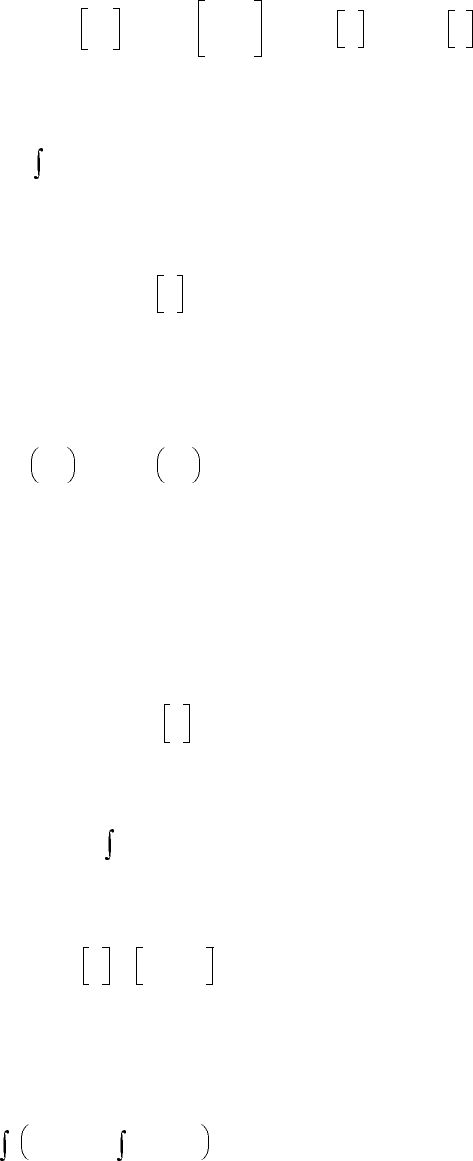
15-24 Mechatronic Systems, Sensors, and Actuators
one finds
Minimizing the quadratic performance functional
one finds the control law using the first-order necessary condition for optimality. In particular, we have
Here, Q is the positive semi-definite constant-coefficient matrix, and G is the positive weighting constant-
coefficient matrix.
The solution of the Hamilton–Jacobi equation
is satisfied by the quadratic return function V = Here, K is the symmetric matrix, which must
be found by solving the nonlinear differential equation
The controller is given as
From one has
Therefore, we obtain the integral control law
In this control algorithm, the error vector is used in addition to the state feedback.
As was illustrated, the bounds are imposed on the control, and u
min
≤ u ≤ u
max
. Therefore, the bounded
controllers must be designed. Using the nonquadratic performance functional [9]
x
·
Σ
t() A
Σ
x
Σ
B
Σ
uN
Σ
r,++= yHx,= x
Σ
x
x
ref
,= A
Σ
A 0
H– 0
,= B
Σ
B
0
,= N
Σ
0
I
=
J
1
2
--
x
Σ
T
Qx
Σ
u
T
Gu+()td
t
0
t
f
=
uG
1–
B
Σ
T
–
∂
V
∂
x
Σ
--------
G
1–
B
0
T
–==
∂
V
∂
x
Σ
--------
∂
V
∂
t
-------–
1
2
--
x
Σ
T
Qx
Σ
∂
V
∂
x
Σ
--------
T
Ax
Σ
1
2
--
∂
V
∂
x
Σ
--------
T
B
Σ
G
1–
B
Σ
T
∂
V
∂
x
Σ
--------
–+=
1
2
--
x
Σ
T
Kx
Σ
.
K
·
– QA
Σ
T
KK
T
A
Σ
K
T
B
Σ
G
1–
B
Σ
T
K,–++= Kt
f
() K
f
=
uG
1–
B
Σ
T
Kx
Σ
– G
1–
–
B
0
T
Kx
Σ
==
x
·
ref
t() et()=
,
x
ref
t() et()td=
ut() G
1–
B
0
T
– K
xt()
eet()dt
=
Jx
Σ
T
Qx
Σ
G tan
1–
u+ ud td
t
0
t
f
=
9258_C015.fm Page 24 Tuesday, October 2, 2007 3:35 AM

Rotational and Translational Microelectromechanical Systems 15-25
with positive semi-definite constant-coefficient matrix Q and positive-definite matrix G, one finds
This controller is obtained assuming that the solution of the functional partial differential equation
can be approximated by the quadratic return function
where K is the symmetric matrix.
15.6.3 Time-Optimal Control
A time-optimal controller can be designed using the functional
Taking note of the Hamilton–Jacobi equation
the relay-type controller is found to be
This “optimal” control algorithm cannot be implemented in practice due to the chattering phenom-
enon. Therefore, relay-type control laws with dead zone
are commonly used.
15.6.4 Sliding Mode Control
Soft-switching sliding mode control laws are synthesized in [9]. Sliding mode soft-switching algorithms
provide superior performance, and the chattering effect is eliminated.
To design controllers, we model the states and errors dynamics as
The smooth sliding manifold is
ut() G
1–
B
0
T
K
xt()
eet()td
tanh– sat
1–
+1
G
1–
B
0
T
K
xt()
eet()td
,–≈= 1– u 1≤≤
V
1
2
--
x
Σ
T
Kx
Σ
=
J
1
2
--
x
Σ
T
Qx
Σ
()td
t
0
t
f
=
∂
V
∂
t
-------
= –
min
1≤u≤1–
1
2
--
x
Σ
T
Qx
Σ
∂
V
∂
x
Σ
--------
T
Ax
Σ
B
Σ
u+()+
u sgn–= B
Σ
T
∂
V
∂
x
Σ
--------
,1u 1≤≤–
uB
Σ
T
∂
V
∂
x
Σ
--------
sgn–=
dead zone
,1u 1≤≤–
x
·
t() Ax Bu,+ 1 u 1≤≤–=
e
·
t() Nr
·
t() HAx HBu––=
Mt, x, e()R
Š0
∈ XE
υ
t, x, e()×× 0={}=
t, x, e()R
Š0
∈ XE
υ
j
t, x, e()×× 0={}
j=1
m
∩
=
9258_C015.fm Page 25 Tuesday, October 2, 2007 3:35 AM
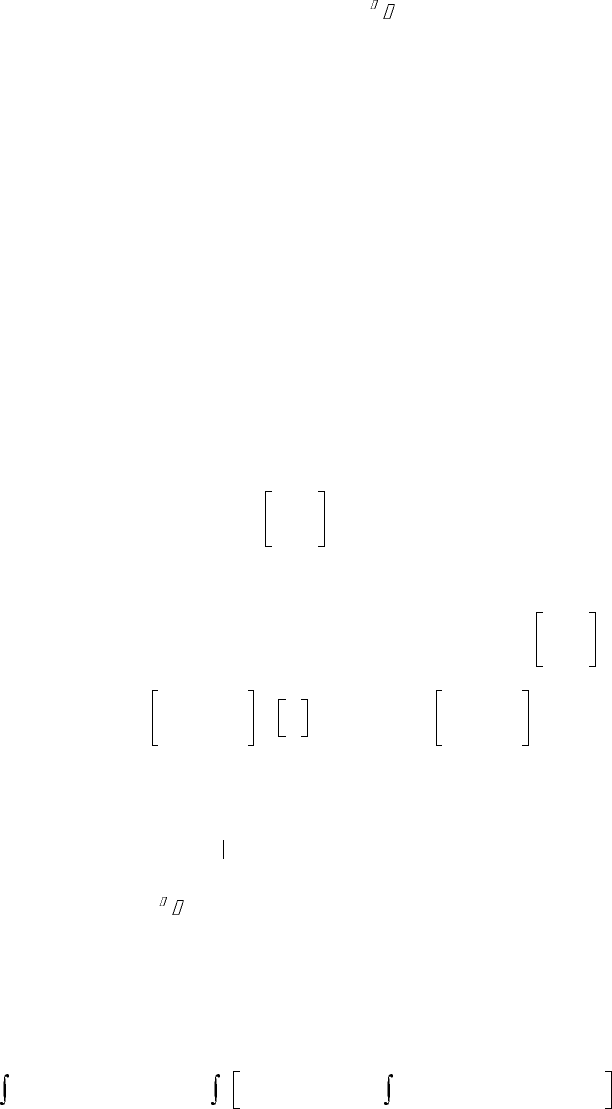
15-26 Mechatronic Systems, Sensors, and Actuators
The time-varying nonlinear switching surface is
υ
(t, x, e) = K
υ
xe
(t, x, e) = 0. The soft-switching control
law is given as
where
φ
(⋅) is the continuous real-analytic function of class C ( ≥ 1), for example, tanh and erf.
15.6.5 Constrained Control of Nonlinear MEMS: Hamilton–Jacobi Method
Constrained optimization of MEMS is a topic of great practical interest. Using the Hamilton–Jacobi theory,
the bounded controllers can be synthesized for continuous-time systems modeled as
Here, x
MEMS
∈ X
s
is the state vector; u ∈ U is the vector of control inputs: y ∈ Y is the measured output;
F
s
(⋅), B
s
(⋅) and H(⋅) are the smooth mappings; F
s
(0) = 0, B
s
(0) = 0, and H(0) = 0; and w is the nonnegative
integer.
To design the tracking controller, we augment the MEMS dynamics
with the exogenous dynamics
Using the augmented state vector
one obtains
The set of admissible control U consists of the Lebesgue measurable function u(⋅), and a bounded
controller should be designed within the constrained control set
We map the control bounds imposed by a bounded, integrable, one-to-one, globally Lipschitz, vector-
valued continuous function Φ ∈C
( ≥ 1). Our goal is to analytically design the bounded admissible state-
feedback controller in the closed form as u = Φ(x). The most common Φ are the algebraic and transcen-
dental (exponential, hyperbolic, logarithmic, trigonometric) continuously differentiable, integrable, one-
to-one functions. For example, the odd one-to-one integrable function tanh with domain (−∞, +∞) maps
the control bounds. This function has the corresponding inverse function tanh
−1
with range (−∞, +∞).
The performance cost to be minimized is given as
where G
−1
∈⺢
m ×m
is the positive-definite diagonal matrix.
ut, x, e()G
φυ
(),–= 1 u 1≤≤– , G 0>
x
·
MEMS
t() F
s
x
MEMS
()B
s
x
MEMS
()u
2w+1
,+= yHx
MEMS
=
u
min
uu
max
≤≤ , x
MEMS
t
0
() x
0
MEMS
=
x
·
MEMS
t() F
s
x
MEMS
()B
s
x
MEMS
()u
2w+1
+= yHx
MEMS
()=
u
min
uu
max
≤≤ , x
MEMS
t
0
() x
0
MEMS
=
x
·
ref
t() Nr y– Nr H x
MEMS
().–==
x
x
MEMS
x
ref
= X∈
x
·
t() Fx, r()Bx()u
2w+1
,+ u
min
uu
max
,≤≤ xt
0
() x
0
,= x
x
MEMS
x
ref
==
Fx, r()
F
s
x
MEMS
()
H– x
MEMS
()
0
N
+ r, Bx()
B
s
x
MEMS
()
0
==
UuR
m
u
imin
u
i
u
imax
,≤≤∈{= i 1,…,m }= .
JW
x
x() W
u
u()+[]td
t
0
∞
W
x
x() 2w 1+()Φ
1–
u()()
T
G
1–
diag u
2w
()ud+ td
t
0
∞
==
9258_C015.fm Page 26 Tuesday, October 2, 2007 3:35 AM

Rotational and Translational Microelectromechanical Systems 15-27
Performance integrands W
x
(⋅) and W
u
(⋅) are real-valued, positive-definite, and continuously differen-
tiable integrand functions. Using the properties of Φ one concludes that inverse function Φ
−1
is integrable.
Hence, integral
exists.
Example
Consider a nonlinear dynamic system
Taking note of
one has the positive-definite integrand
In general, if the hyperbolic tangent is used to map the saturation effect, for the single-input case, one has
Necessary conditions that the control function u(·) guarantees a minimum to the Hamiltonian
are: first-order necessary condition n1,
and second-order necessary condition n2,
The positive-definite return function V(·), V ∈ C
κ
,
κ
≥ 1, is
The Hamilton–Jacobi–Bellman equation is given as
Φ
1–
u()()
T
G
1–
diag u
2w
()ud
dx
dt
------
ax bu
3
,+= u
min
uu
max
≤≤
W
u
u() 2w 1+()Φ
1–
u()()
T
G
1–
diag u
2w
()ud=
W
u
u() 3tanh
1–
uG
1–
u
2
ud
1
3
--
u
3
tanh
1–
u
1
6
--
u
2
1
6
--
1 u
2
–()ln++ , G
1–
1
3
--
== =
W
u
u() 2w 1+()u
2w
tanh
1–
u
k
---
ud
u
2w+1
tanh
1–
u
k
---
k
u
2w+1
k
2
u
2
–
---------------
ud
–==
HW
x
x() 2w 1+()+Φ
1–
u()()
T
G
1–
diag u
2w
()ud
∂
Vx()
T
∂
x
-----------------
Fx, r()Bx()u
2w+1
+[]+=
∂
H
∂
u
-------
0=
∂
2
H
∂
u
∂
u
T
×
---------------------
0>
Vx
0
() inf
u∈U
Jx
0
, u()inf Jx
0
, Φ ·()()0≥==
∂
V
∂t
-------–
min
u∈U
W
x
x() 2w 1+()+Φ
1–
u()()
T
G
1–
diag u
2w
()ud
∂
Vx()
T
∂
x
-----------------
Fx, r()Bx()u
2w+1
+[]+=
9258_C015.fm Page 27 Tuesday, October 2, 2007 3:35 AM
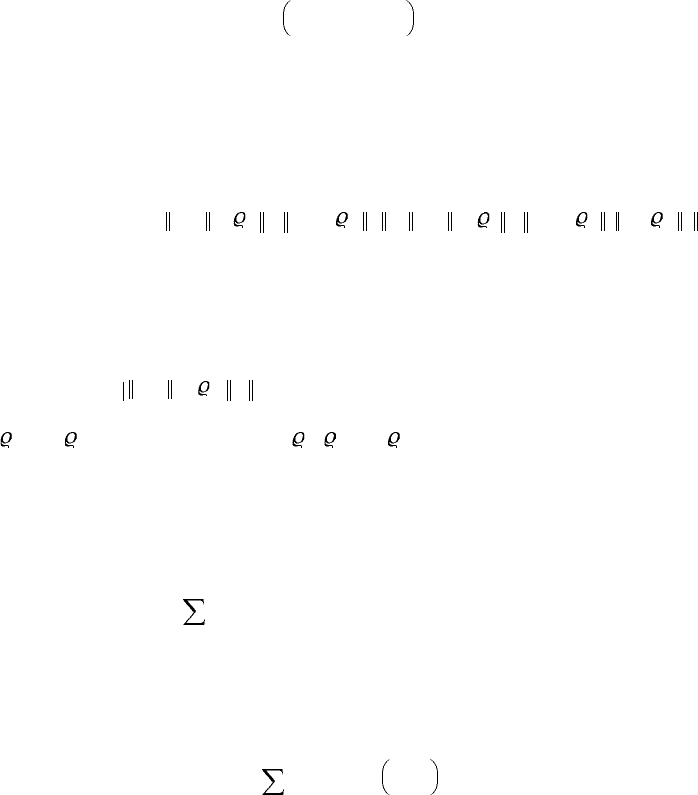
15-28 Mechatronic Systems, Sensors, and Actuators
The controller should be derived by finding the control value that attains the minimum to nonqua-
dratic functional. The first-order necessary condition (n1) leads us to an admissible bounded control
law. In particular,
The second-order necessary condition for optimality (n2) is met because the matrix G
−1
is positive-
definite. Hence, a unique, bounded, real-analytic, and continuous control candidate is designed.
If there exists a proper function V(x) which satisfies the Hamilton–Jacobi equation, the resulting
closed-loop system is robustly stable in the specified state X and control U sets, and robust tracking is
ensured in the convex and compact set XY(X
0
,U,R,E
0
). That is, there exists an invariant domain of stability
and control u(·), u ∈U steers the tracking error to the set
Here
x
and
e
are the KL-functions; and
u
,
r
, and
y
are the K-functions.
The solution of the functional equation should be found using nonquadratic return functions. To
obtain V(·), the performance cost must be evaluated at the allowed values of the states and control. Linear
and nonlinear functionals admit the final values, and the minimum value of the nonquadratic cost is
given by power-series forms [9]. That is,
The solution of the partial differential equation is satisfied by a continuously differentiable positive-
definite return function
where matrices K
i
are found by solving the Hamilton–Jacobi equation.
The quadratic return function in V(x) = x
T
K
0
x is found by letting
η
=
γ
= 0. This quadratic candidate
may be employed only if the designer enables to neglect the high-order terms in Taylor’s series expansion.
Using
η
= 1 and
γ
= 0, one obtains
while for
η
= 4 and
γ
= 1, we have the following function:
u Φ GB x()
T
∂
Vx()
∂
x
---------------
– , u ∈U=
Sx ∈R
c
, e ∈R
b
: xt()
x
x
0
, t()≤
u
u(), et()
e
e
0
, t()
r
r()
y
y(),++≤+{=
x ∀∈XX
0
,U(), t ∀∈[t
0
, ∞), e ∀∈EE
0
, R, Y()}R
c
R
b
× ,⊂
S
E
δ
() e ∈ R
b
: e
0
∈ E
0
, x ∈ XX
0
,U(), r ∈ R, y ∈ Y, t ∈ t
0
, ∞[){=
et()
e
e
0
,t()
δ
,
δ
0, e ∈ EE
0
,R,Y(), t∀ ∈ t
0
,∞)[∀≥+≤}R
b
⊂
J
min
vx
0
()
2 i+
γ
+1()
2
γ
+1
------ ---- ------ -------
i=0
η
,
η
0, 1, 2, …,
γ
0, 1, 2,…===
Vx()
2
γ
1+
2 i
γ
1++()
---------------------------
i=0
η
x
i+
γ
+1
2
γ
+1
------- --- -----
T
K
i
x
i+
γ
+1
2
γ
+1
----- --- -------
=
1
2
--
Vx()
1
2
--
x
T
K
0
x
1
4
--
x
2
()
T
K
1
x
2
+=
Vx()
3
4
--
x
2/3
()
T
K
0
x
2/3
1
2
--
x
T
K
1
x
3
8
--
x
4/3
()
T
K
2
x
4/3
3
10
-----
x
5/3
()
T
K
3
x
5/3
1
4
--
x
2
()
T
K
4
x
2
++ + +=
9258_C015.fm Page 28 Tuesday, October 2, 2007 3:35 AM
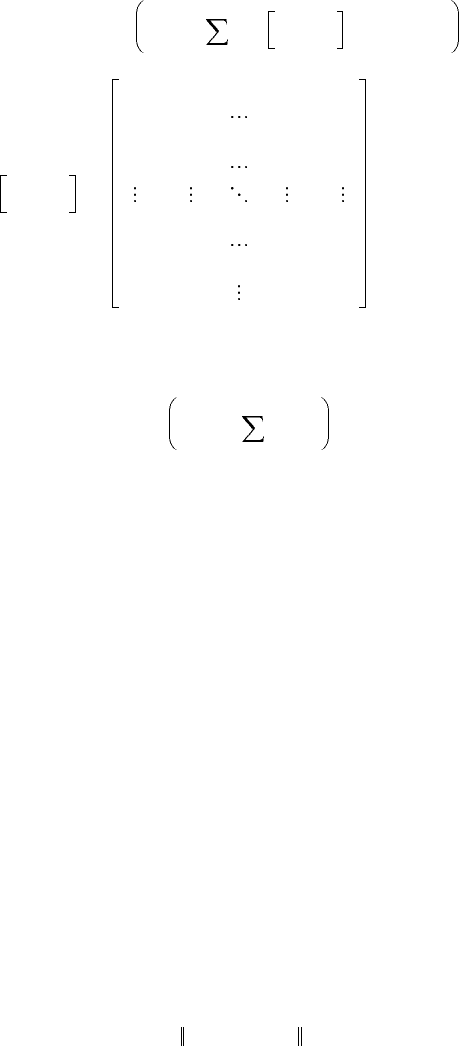
Rotational and Translational Microelectromechanical Systems 15-29
The nonlinear bounded controller is given as
If matrices K
i
are diagonal, we have the following control algorithm:
15.6.6 Constrained Control of Nonlinear Uncertain MEMS: Lyapunov
Method
Over the horizon [t
0
, ∞) we consider the dynamics of MEMS modeled as
where t ∈⺢
≥0
is the time; x ∈X is the state-space vector; u ∈U is the vector of bounded control inputs;
r ∈R and y ∈Y are the measured reference and output vectors; z ∈Z and p ∈P are the parameter
uncertainties, functions z(·) and p(·) are Lebesgue measurable and known within bounds; Z and P are
the known nonempty compact sets; and F
z
(·), B
p
(·), and H(·) are the smooth mapping fields.
Let us formulate and solve the motion control problem by synthesizing robust controllers that guar-
antee stability and robust tracking. Our goal is to design control laws that robustly stabilize nonlinear
systems with uncertain parameters and drive the tracking error e(t) = r(t) − y(t), e ∈E robustly to the
compact set. For MEMS modeled by nonlinear differential equations with parameter variations, the
robust tracking of the measured output vector y ∈Y must be accomplished with respect to the measured
uniformly bounded reference input vector r ∈R.
The nominal and uncertain dynamics are mapped by F(·), B(·), and Ξ(·). Hence, the system evolution
is described as
There exists a norm of Ξ(t, x, u, z, p), and ≤
ρ
(t, x), where
ρ
(·) is the continuous
Lebesgue measurable function. Our goal is to solve the motion control problem, and tracking controllers
must be synthesized using the tracking error vector and the state variables. Furthermore, to guarantee
robustness and to expand stability margins, to improve dynamic performance, and to meet other require-
ments, nonqudratic Lyapunov functions V(t, e, x) will be used in stability analysis and design of robust
tracking control laws.
u Φ GB x()
T
diag xt()
i−
γ
2
γ
+1
----- --- ----
K
i
t()xt()
i+
γ
+1
2
γ
+1
------ ---- -----
i=0
η
– ,=
diag xt()
i−
γ
2
γ
+1
----- --- ----
x
1
i−
γ
2
γ
+1
----- --- ----
0 00
0 x
2
i−
γ
2
γ
+1
---- ---- ----
00
00 x
c−1
i−
γ
2
γ
+1
----- ---- ---
0
00
0 x
c
i−
γ
2
γ
+1
----- --- ----
=
u Φ GB x()
T
K
i
x
2i+1
2
γ
+1
---- --- -----
i=0
η
–=
x· t() F
z
t, x, r, z()B
p
t, x, p()u, y+ Hx(), u
min
uu
max
, xt
0
()≤≤ x
0
===
x· t() Ft, x, r()Bt, x()u Ξ t, x, u, z, p(), y++ Hx(),==u
min
uu
max
≤≤ , xt
0
() x
0
=
Ξ t, x, u,z, p()
9258_C015.fm Page 29 Tuesday, October 2, 2007 3:35 AM
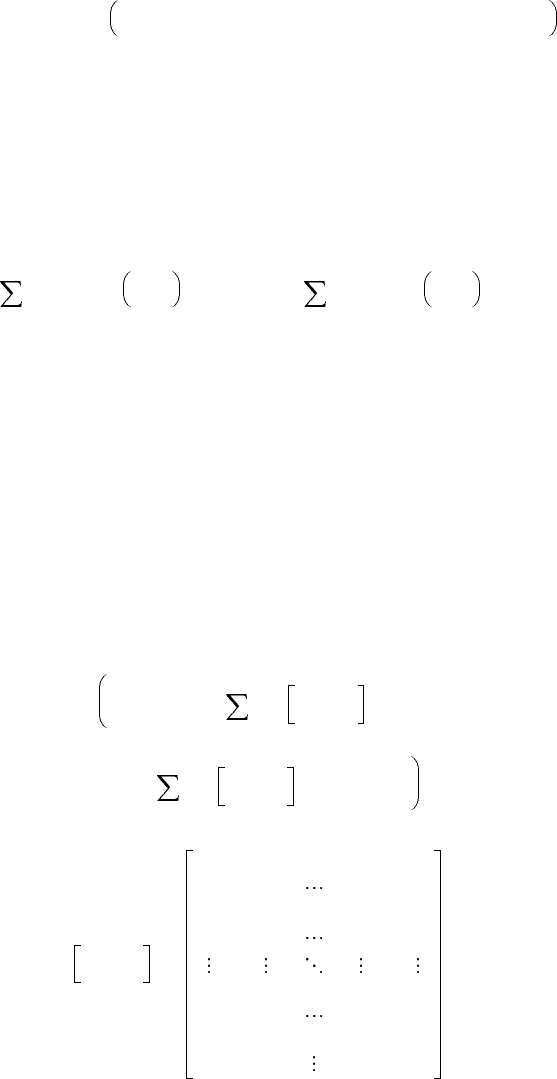
15-30 Mechatronic Systems, Sensors, and Actuators
Suppose that a set of admissible control U consists of the Lebesgue measurable function u(·). It was
demonstrated that the Hamilton–Jacobi theory can be used to find control laws, and the minimization
of nonquadratic performance functionals leads one to the bounded controllers.
Letting u = Φ(t, e, x), one obtains a set of admissible controllers. Applying the error and state feedback
we define a family of tracking controllers as
where Ω(·) is the nonlinear function; G
E
(·) and G
X
(·) are the diagonal matrix-functions defined on [t
0
,∞);
B
E
(·) is the matrix-function; and V(·) is the continuous, differentiable, and real-analytic function.
Let us design the Lyapunov function. This problem is a critical one and involves well-known difficulties.
The quadratic Lyapunov candidates can be used. However, for uncertain nonlinear systems, nonquadratic
functions V(t, e, x) allow one to realize the full potential of the Lyapunov-based theory and lead us to
the nonlinear feedback maps which are needed to achieve conflicting design objectives. We introduce
the following family of Lyapunov candidates:
where K
Ei
(·) and K
Xi
(·) are the symmetric matrices;
ζ
,
β
,
η
, and
γ
are the nonnegative integers;
ζ
= 0, 1,
2,…;
β
= 0, 1, 2,…;
η
= 0, 1, 2,…; and
γ
= 0, 1, 2,…
The well-known quadratic form of V(t, e, x) is found by letting
ζ
=
β
=
η
=
γ
= 0, and we have
By using
ζ
= 1,
β
= 0,
η
= 1, and
γ
= 0, one obtains a nonquadratic candidate:
One obtains the following tracking control law:
u Ω x()Φt, e, x()Ωx()ΦG
E
t()B
E
t, x()
T
1
s
--
∂
Vt, e, x()
∂
e
-------------------------
G
X
t()Bt, x()
T
∂
Vt, e, x()
∂
x
-------------------------
+
– , s
d
dt
-----
== =
Vt, e, x()
2
β
1+
2 i
β
1++()
----------------------------
e
i+
β
+1
2
β
+1
---- --- ------- --
T
K
Ei
t()e
i+
β
+1
2
β
+1
------ --- -------
i=0
ς
2
γ
1+
2 i
γ
1++()
---------------------------
x
i+
γ
+1
2
γ
+1
------ ---- -----
T
K
Xi
t()x
i+
γ
+1
2
γ
+1
----- --- -------
i=0
η
+=
Vt, e, x()
1
2
--
e
T
K
E0
t()e
1
2
--
x
T
K
X0
t()x+=
Vt, e, x()
1
2
--
e
T
K
E0
t()e
1
4
--
e
2
T
K
E1
t()e
2
1
2
--
x
T
K
X0
t()x
1
4
--
x
2
T
K
X1
t()x
2
+++=
u Ω x()ΦG
E
t()B
E
t, x()
T
diag et()
i−
β
2
β
+1
----- ---- -----
K
Ei
t()
1
s
--
et()
i+
β
+1
2
β
+1
----- ---- -------
i=0
ς
–=
G
X
t()Bt, x()
T
diag
i=0
η
xt()
i−
γ
2
γ
+1
------- --- --
K
Xi
t()xt()
i+
γ
+1
2
γ
+1
---- --- --------
+
diag et()
i−
β
2
β
+1
----- --- -----
e
1
i−
β
2
β
+1
------ --- ----
0 00
0 e
2
i−
β
2
β
+1
------- --- ---
00
00 e
b−1
i−
β
2
β
+1
------ --- ----
0
00
0 e
b
i−
β
2
β
+1
------- --- ---
=
9258_C015.fm Page 30 Tuesday, October 2, 2007 3:35 AM
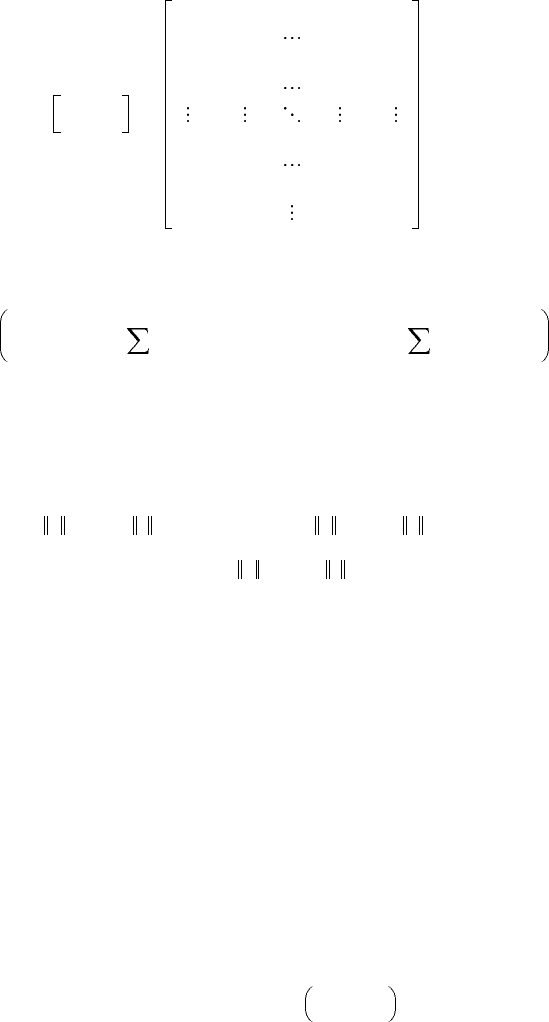
Rotational and Translational Microelectromechanical Systems 15-31
and
If matrices K
Ei
and K
Xi
are diagonal, we have
A closed-loop uncertain system is robustly stable in X(X
0
, U, Z, P) and robust tracking is guaranteed
in the convex and compact set E(E
0
, Y, R) if for reference inputs r ∈R and uncertainties in Z and P there
exists a C
κ
(
κ
≥ 1) function V(·), as well as K
∞
-functions
ρ
X1
(·),
ρ
X2
(·),
ρ
E1
(·),
ρ
E2
(·) and K-functions
ρ
X3
(·),
ρ
E3
(·), such that the following sufficient conditions:
are guaranteed in an invariant domain of stability S, and XE(X
0
, E
0
, U, R, Z, P) S.
The sufficient conditions under which the robust control problem is solvable were given. Computing
the derivative of the V(t, e, x), the unknown coefficients of V(t , e, x) can be found. That is, matrices
K
Ei
(·) and K
Xi
(·) are obtained. This problem is solved using the nonlinear inequality concept [9].
Example 15.6.1: Control of Two-Phase Permanent-Magnet
Stepper Micromotors
High-performance MEMS with permanent-magnet stepper micromotors have been designed and man-
ufactured. Controllers are needed to be designed to control permanent-magnet stepper micromotors,
and the angular velocity and position are regulated by changing the magnitude of the voltages applied
or currents fed to the stator windings (see Example 15.5.3). The rotor displacement is measured or
observed in order to properly apply the voltages to the phase windings. To solve the motion control
problem, the controller must be designed. It is illustrated that novel control algorithms are needed to be
deployed to maximize the torque developed. In fact, conventional controllers
cannot be used.
Using the coenergy concept, one finds the expression for the electromagnetic torque as given by
and thus, one must fed the phase currents as sinusoidal and cosinusoidal functions of the rotor displacement.
diag xt()
i−
γ
2
γ
+1
------- --- --
x
1
i−
γ
2
γ
+1
------ ---- --
0 00
0 x
2
i−
γ
2
γ
+1
------ --- ---
00
00 x
n−1
i−
γ
2
γ
+1
------ ---- --
0
00
0 x
n
i−
γ
2
γ
+1
------ --- ---
=
u Ω x()ΦG
E
t()B
E
t, x()
T
K
Ei
t()
1
s
--
et()
2i+1
2
β
+1
----- ---- ----
i=0
ς
G
X
t()Bt, x()
T
K
Xi
t()xt()
2i+1
2
γ
+1
---- --- -----
i=0
η
+–=
ρ
X1
x()
ρ
E1
e()+ Vt, e, x()
ρ
X2
x()
ρ
E2
e()+≤≤
dV t, e, x()
dt
-------------------------
ρ
X3
– x()
ρ
E3
e()–≤
⊆
uG
1–
B
T
∂
V
∂
x
-------
–= and u Φ G
1–
B
T
∂
V
∂
x
--------
–=
T
e
RT
ψ
m
– i
as
RT
θ
rm
()sin i
bs
RT
θ
rm
()cos–[]=
9258_C015.fm Page 31 Tuesday, October 2, 2007 3:35 AM
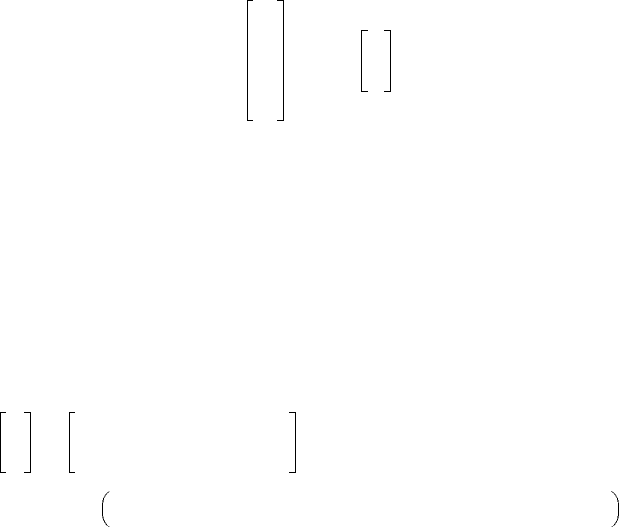
15-32 Mechatronic Systems, Sensors, and Actuators
The mathematical model of permanent-magnet stepper micromotor was found in Example 15.5.3 as
The rotor resistance is a function of temperature because the resistivity is
ρ
T
=
ρ
0
[(1 +
α
ρ
(T° − 20°)].
Hence, r
s
(·) ∈[r
s min
r
s max
]. The susceptibility of the permanent magnets (thin films) decreases with
increasing temperature. Other servo-system parameters also vary; in particular, L
ss
(·) ∈[L
ss min
L
ss max
] and
B
m
(·) ∈[B
m min
B
m max
].
The following equation of motion in vector form results:
Here, x ∈X and u ∈U are the state and control vectors, r ∈R and y ∈Y are the measured reference and
output, d ∈D is the disturbance, d = T
L
, and z ∈Z and p ∈P are the unknown and bounded parameter
uncertainties.
Our goal is to design the bounded control u(·) within the constrained set
U
= {u ∈ ⺢
2
: u
min
≤ u ≤ u
max
, u
min
< 0, u
max
> 0} ⺢
2Ž
An admissible control law, which guarantees a balanced two-phase voltage applied to the ab windings
and ensures the maximal electromagnetic torque production, is synthesized as
where e ∈E is the measured tracking error, e(t) = r(t) − y(t); Φ(·) is the bounded function (erf, sat, tanh),
and Φ ∈U, |Φ(·)| ≤ V
max
, V
max
is the rated voltage; G
x
(·), G
e
(·), and G
i
(·) are bounded and symmetric,
G
x
> 0, G
e
> 0, G
i
> 0; and V(·) is the C
κ
(
κ
≥ 1) continuously differentiable, real-analytic function.
For , u ∈U, r ∈R, d ∈D, z ∈Z, and p ∈P, we obtain the state evolution set X. The state-output
set is
di
as
dt
-------
r
s
L
ss
------
i
as
RT
ψ
m
L
ss
--------------
ω
rm
RT
θ
rm
()sin
1
L
ss
-- ---
u
as
++–=
di
bs
dt
-------
r
s
L
ss
------
i
bs
RT
ψ
m
L
ss
--------------
ω
rm
RT
θ
rm
()cos–
1
L
ss
-----
u
bs
+–=
d
ω
rm
dt
-----------
RT
ψ
m
J
--------------
i
as
RT
θ
rm
()sin i
bs
RT
θ
rm
()cos–[]
B
m
J
------
ω
rm
–
1
J
--
T
L
––=
d
θ
rm
dt
----------
ω
rm
=
x· t() F
z
t, x, r, d, z()B
p
p()u,+= u
min
uu
max
≤≤
xt
0
() x
0
, x
i
as
i
bs
ω
rm
θ
rm
, u
u
as
u
bs
, y
θ
rm
== = =
⊂
u
u
as
u
bs
RT
θ
rm
()sin– 0
0 RT
θ
rm
()cos
==
Φ G
x
t()B
T
∂
Vt, x, e()
∂
x
-------------------------
G
e
t()B
e
T
∂
Vt, x, e()
∂
e
-------------------------
G
i
t()B
e
T
1
s
--
∂
Vt, x, e()
∂
e
-------------------------
++
×
X
0
X⊆
XY X
0
,U, R, D, Z, P()x, y()XY: x
0
X
0
, uU,∈∈×∈{ rR, dD, zZ, pP, t [t
0
, ∞)∈∈∈∈∈}=
9258_C015.fm Page 32 Tuesday, October 2, 2007 3:35 AM
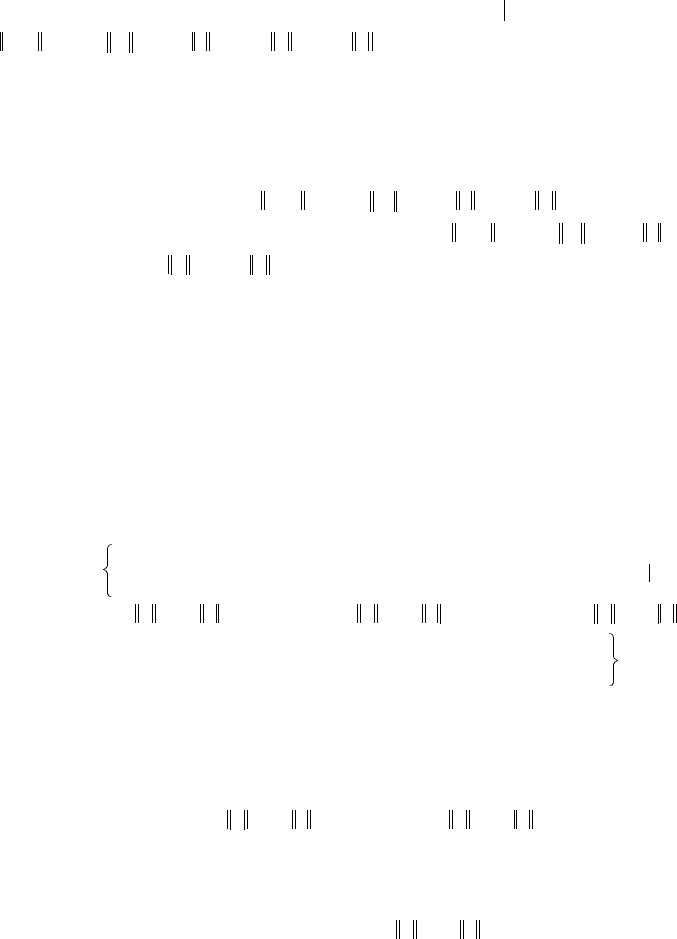
Rotational and Translational Microelectromechanical Systems 15-33
and a reference-output map can be found. Our goal is to find the bounded controller such that the tracking
error e(⋅):[t
0
,∞)→E with evolves in the specified closed set
Here,
ρ
e
(⋅) is the KL-function;
ρ
r
(⋅),
ρ
d
(⋅) and
ρ
y
(⋅) are the K-functions.
A positive-invariant domain of stability is found for the closed-loop system with x
0
∈X
0
, e
0
∈
Ε
0
, u ∈U,
r ∈R, d ∈D, z ∈Z and p ∈P. In particular,
where
ρ
x
(⋅) is the KL-function.
To study the robustness, tracking, and disturbance rejection, we consider a state-error set
The robust tracking, stability, and disturbance rejection are guaranteed if . The admissible set
S
s
is found by using the Lyapunov stability theory [9], and
where
ρ
1
(⋅),
ρ
2
(⋅),
ρ
3
(⋅) and
ρ
4
(⋅) are the K
∞
-functions; and
ρ
5
(⋅) and
ρ
6
(⋅) are the K-functions.
If in XE there exists a C
κ
Lyapunov function V(t, x, e) such that for all
and on sufficient condition for stability (s1)
and inequality
which is the sufficient condition for stability s2, hold, then
1. Solution x(⋅):[t
0
,∞)→X for closed-loop system is robustly bounded and stable.
2. Convergence of the error vector e(⋅):[t
0
, ∞)→E to S
e
is ensured in XE.
3. XE is convex and compact, and
That is, if criteria (s1) and (s2) are guaranteed, we have
E
0
E
⊆
S
e
δ
() e R
1
: e
0
E
0
, xXX
0
,U, R, D, Z, P(), t [t
0
, ∞)∈∈∈∈{=
et() ≤
ρ
e
t, e
0
()
ρ
r
r()
ρ
d
d()
ρ
y
y()
δ
++ ++,
δ
0, eEE
0
, R, D, Y(), t [t
0
, ∞)∈∀∈∀≥}
S
s
x{ R
4
, e R
1
: xt()
ρ
x
t, x
0
()
ρ
r
r()
ρ
d
d()++≤∈∈
δ
, +=
x∀ XX
0
,U, R, D, Z, P(), t∀ [t
0
, ∞),∈∈ et()
ρ
e
t, e
0
()≤
ρ
r
r()+
+
ρ
d
d()
ρ
y
y()
δ
, e∀ EE
0
, R, D, Y(), t∀ [t
0
, ∞) }∈∈++ ,
XE X
0
, E
0
,U, R, D, Z, P()x, e()XE: x
0
X
0
, e
0
E
0
, uU,∈∈∈×∈{=
rR, dD, zZ, pP, t [t
0
, ∞)∈∈∈∈∈ }
XE S
s
⊆
S
s
x R
4
,e R
1
: x
0
X
0
, e
0
E
0
, uU, rR, dD, zZ, pP∈∈∈∈∈∈∈∈∈
=
ρ
1
x
ρ
2
+ eVt, x, e()
ρ
3
x
ρ
4
e ,
dV t, x, e()
dt
------------------------
ρ
5
x–
ρ
6
e ,–≤+≤≤
x∀ XX
0
,U, R, P, Z, P(), e∀ EE
0
, R, D, Y(), t [t
0
, ∞)∈∀∈∈
x
0
X
0
, e
0
E
0
, uU,∈∈∈
rR, dD, zZ,∈∈∈ pP∈ [t
0
, ∞)
ρ
1
x
ρ
2
eVt, x, e()
ρ
3
x
ρ
4
e+≤≤+
dV t, x, e()
dt
------------------------
ρ
5
– x
ρ
6
e–≤
XE
S
s
.⊆
XE S
s
.⊆
9258_C015.fm Page 33 Tuesday, October 2, 2007 3:35 AM
